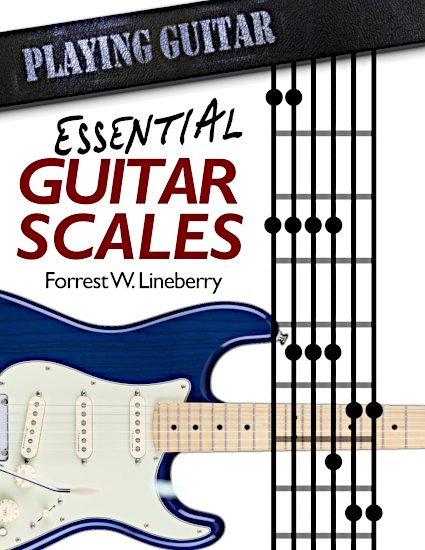Arpeggiate, Arpeggio
The term ARPEGGIATE literally means to play as if you are playing a harp.The standard technique when playing chords on the harp is to pluck the strings from low to high in quick succession rather than plucking them all at once. There are various ways for arpeggiiating a chord on the guitar.
Holding a chord and strumming the strings slowly enough that you hear the individual notes:
Holding a chord and picking the notes individually:
The term ARPEGGIO refers to a special form of arpeggiating. An arpeggio is the notes of a chord played individually, in succession, as if playing a scale. Another term used for this is BROKEN CHORD. The idea being that you take a chord and break it apart so you can play the notes individually. What distinguishes playing an arpeggio from simply arpeggiating a chord is playing the notes/intervals that belong to the chord but are left off the chord shape. Let’s look at the E shape from the root G:

Notice that the bottom note of the chord is the root, but we skip the 3rd and use the 5th as the next note in the chord. This is done to make a logical and playable chord shape. When it comes to playing the arpeggio, however, we’re going to add that note back into the chord and play each interval in succession from low to high and from high to low:


You will notice from the demonstration that when playing an arpeggio the notes are not held, so they do not ring together. This is not a requirement, but it is a commonly used technique that also distinguishes playing an arpeggio from arpeggiating a chord. Typically with the latter, you do want the notes to be held and allowed to ring together.
The same process is applied to the remaining shapes:




Remember that these shapes keep repeating up and down the fretboard until we run out of frets. The E shape arpeggio would repeat at the 15th fret, the D shape arpeggio would repeat at the 17th fret, etc. We could also play the G shape arpeggio at the opposite end of the fretboard using open strings.

Book Title
Essential Guitar Scales
The scales you need, how to learn them, how to practice them, how to USE them.
Sell Link
Coming in early 2020!
Sample Chapter Links
Sample Chapters

